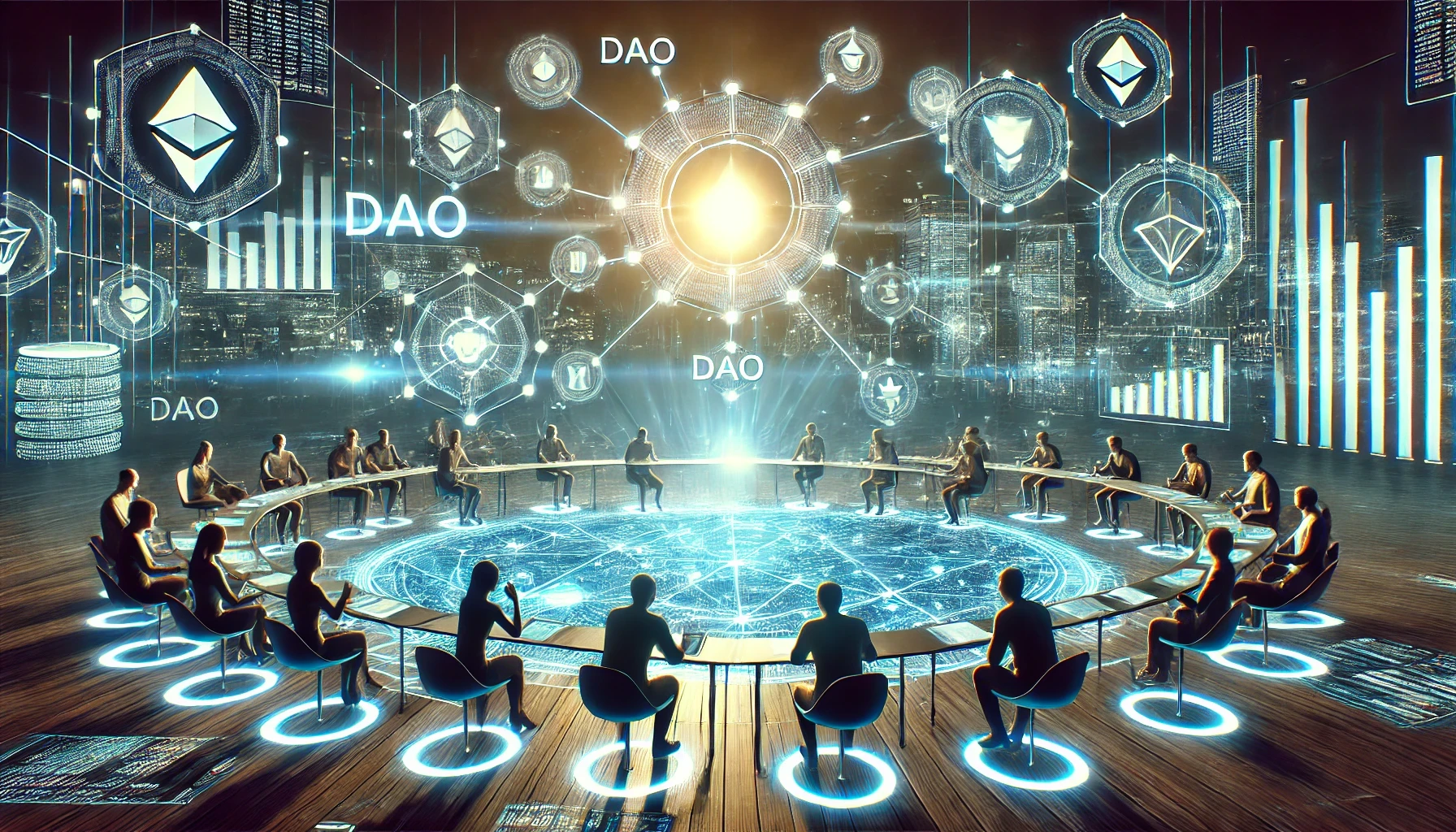1. What Are DAOs?
Decentralized autonomous organizations (DAOs) are blockchain-based entities governed by code and community consensus rather than centralized leadership.
Key Features:
Smart Contracts: Automate decision-making processes and enforce rules transparently.
Community Voting: Members vote on proposals using governance tokens.
Decentralization: No single entity has complete control; power is distributed among participants.
Examples of DAOs
MakerDAO: Manages the DAI stablecoin and votes on collateral types and risk parameters.
Uniswap DAO: Governs protocol upgrades and liquidity incentives for the Uniswap decentralized exchange.
2. The Role of DeFi in DAOs
DeFi and DAOs complement each other in building decentralized ecosystems.
a. DAOs Power DeFi Governance
Most DeFi protocols are governed by DAOs, enabling the community to decide on critical aspects such as:
Protocol upgrades
Fee structures
Liquidity incentives
b. DeFi Empowers DAO Operations
DAOs utilize DeFi tools for treasury management, allowing them to earn yields on idle funds or diversify their holdings.
c. Synergies Between DeFi and DAOs
Together, they create decentralized financial systems that are governed transparently and democratically, fostering trust and innovation.
3. Key Benefits of DeFi-DAO Integration
a. Transparency
All transactions, votes, and decisions are recorded on the blockchain, ensuring accountability.
b. Accessibility
Anyone with an internet connection can participate, breaking down barriers to entry.
c. Efficiency
Smart contracts automate processes, reducing the need for manual intervention.
d. Community-Centric Approach
Stakeholders have a direct say in how protocols are managed, aligning incentives across participants.
4. Challenges Facing DeFi and DAOs
a. Security Risks
Smart contracts are vulnerable to bugs and exploits, potentially putting funds at risk.
Example: The 2016 DAO hack that resulted in the theft of $50 million worth of Ethereum.
b. Regulatory Uncertainty
The decentralized nature of DAOs and DeFi protocols makes them a target for regulators worldwide.
Questions about liability, compliance, and taxation remain unresolved.
c. Governance Issues
Low voter turnout in DAOs can lead to centralization of power among a few active participants.
Governance token distribution may favor early adopters or large investors, creating inequality.
d. Complexity for New Users
Navigating DeFi protocols and DAO governance mechanisms can be intimidating for beginners.
5. Emerging Trends in DeFi and DAOs
a. Cross-Chain DAOs
DAOs are increasingly exploring interoperability across multiple blockchains, expanding their influence and user base.
Example: Polkadot and Cosmos enable cross-chain governance.
b. NFT-Driven DAOs
Some DAOs use NFTs as membership tokens, granting holders governance rights and exclusive benefits.
Example: PleasrDAO uses NFTs to curate high-value digital art collections.
c. Treasury Diversification
DAOs are adopting more sophisticated treasury management strategies, including investments in stablecoins, yield farming, and other assets.
d. AI and Automation
Integrating AI into DAOs could enhance decision-making processes, improve efficiency, and predict market trends.
6. The Future of DeFi and DAOs
a. Mainstream Adoption
DeFi and DAOs are likely to become integral to industries beyond finance, including governance, supply chain management, and social organizations.
b. Enhanced Governance Models
Hybrid governance models combining DAO mechanisms with traditional structures could emerge to balance decentralization and efficiency.
c. Regulatory Clarity
Governments are expected to introduce frameworks that recognize and regulate DAOs and DeFi protocols, fostering growth while ensuring compliance.
d. Inclusive Financial Systems
By removing intermediaries and empowering communities, DeFi and DAOs can drive financial inclusion globally.
Conclusion
DeFi and DAOs are redefining the financial and governance landscapes by combining transparency, efficiency, and community-driven decision-making. While challenges like security risks and regulatory uncertainty persist, the synergies between DeFi and DAOs are unlocking unprecedented opportunities for innovation. As these technologies continue to evolve, they hold the potential to democratize access to financial systems and empower individuals worldwide. Understanding and engaging with DeFi and DAOs today can position you at the forefront of this transformative movement.
